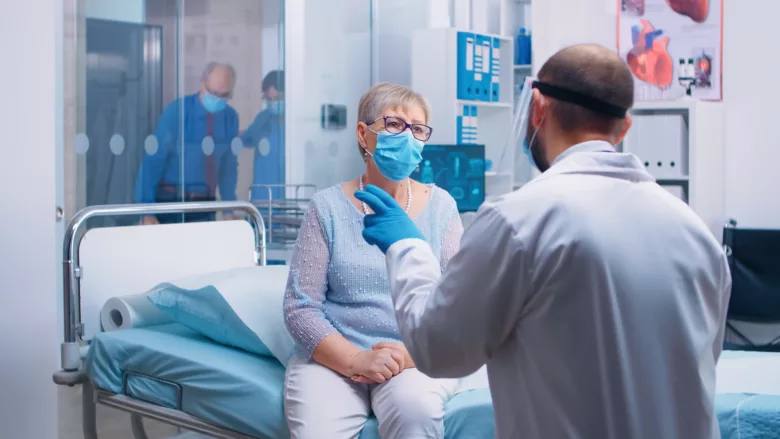Steps to Prevent the Spread of COVID-19
What to Do If You Receive a Positive Test?
You have undergone a COVID-19 test (RT-PCR or Rapid Antigen). What do you do if it comes back positive?

The doctor or medical professional you are consulting will walk you through the dos, don’ts, and curative measures you need to follow. Apart from that, you need to adhere to the following basic guidelines once you test positive for COVID-19.
Step 1
Stay Home Unless You Need to Get Medical Care
- Most people who test positive for COVID-19 have mild symptoms and recover at home without intensive medical care. However, do not leave your home or go to public places except when you need medical care. Avoid public transportation.
- Stay hydrated, get rest, and take over-the-counter medicines like acetaminophen for symptomatic relief.
- Stay in touch with your doctor and get immediate medical care if you have trouble breathing or symptoms worsen.
Step 2
Separate Yourself from Those Around You
- Self-isolate as much as possible and stay in a separate room, away from other people (and pets, if any). Preferably use a separate bathroom.
- Wear a mask if you need to go outside your home or be around other people or animals.
Step 3
Avoid Sharing Household/Personal Items
- Do not share drinking glasses, dishes, cups, utensils, bedding, towels, or any other personal use item with other people.
- Wash these items thoroughly with soap and water after every use.
Step 4
Monitor Your Symptoms Regularly
- Typical symptoms of COVID-19 include fever, cough, runny nose, fatigue, shortness of breath, headache, congestion, nausea or vomiting, or loss of taste and smell. Monitor your symptoms regularly.
- Seek medical care if symptoms worsen.
Step 5
Wear a Mask Covering Your Nose and Mouth
- If you have tested positive and need to be around other people, wear a mask that adequately covers your mouth and nose.
- Try to maintain a distance of at least 6 feet (about two arm’s length) from other people.
- If you cannot wear a mask due to breathing difficulty or other reasons, make sure to cover your sneezes and coughs in some other way.
- Masks should not be placed on children under the age of two, people with breathing difficulties, and those who cannot remove a mask without help.
Step 6
Wash Your Hands Frequently
- Wash your hands for at least 20 seconds with soap and water, especially after coughing or sneezing, blowing your nose, going to the bathroom, and before preparing or eating food.
- If soap and water are unavailable, use a hand sanitizer with at least 60% alcohol content.
- Avoid touching your mouth, nose, and eyes with unwashed hands.
Step 7
Cover Your Coughs and Sneezes
- When you cough or sneeze, ensure that your mouth and nose are covered with a tissue.
- Throw away soiled tissues in a lined trash can.
- Wash your hands immediately with soap and water for a minimum of 20 seconds. If soap and water are unavailable, use a sanitizer with at least 60% alcohol content.
Step 8
Disinfect All High-Touch Surfaces Regularly
- Wear disposable gloves, and clean/disinfect all high-touch surfaces of the room you are in or the bathroom you are using. High-touch surfaces include doorknobs, remote controls, phones, keyboards, tablets, laptops, tabletops, counters, toilets, bathroom fixtures, and bedside tables.
- If a caregiver is doing the cleaning, they should do so on an as-needed basis wearing a mask and disposable gloves.
- Clean and disinfect surfaces soiled with blood, stool, cough droplets, or body fluids.
ARE YOU AFFECTED BY COVID-19?
Stay Safe
BE INFORMED ABOUT COVID-19
If you believe you have COVID-19 symptoms, conduct a test to confirm.
- Headache & Sore Throat
- Fever
- Shaking Chills
- Shortness of Breath
- Diarrhea
- Cough